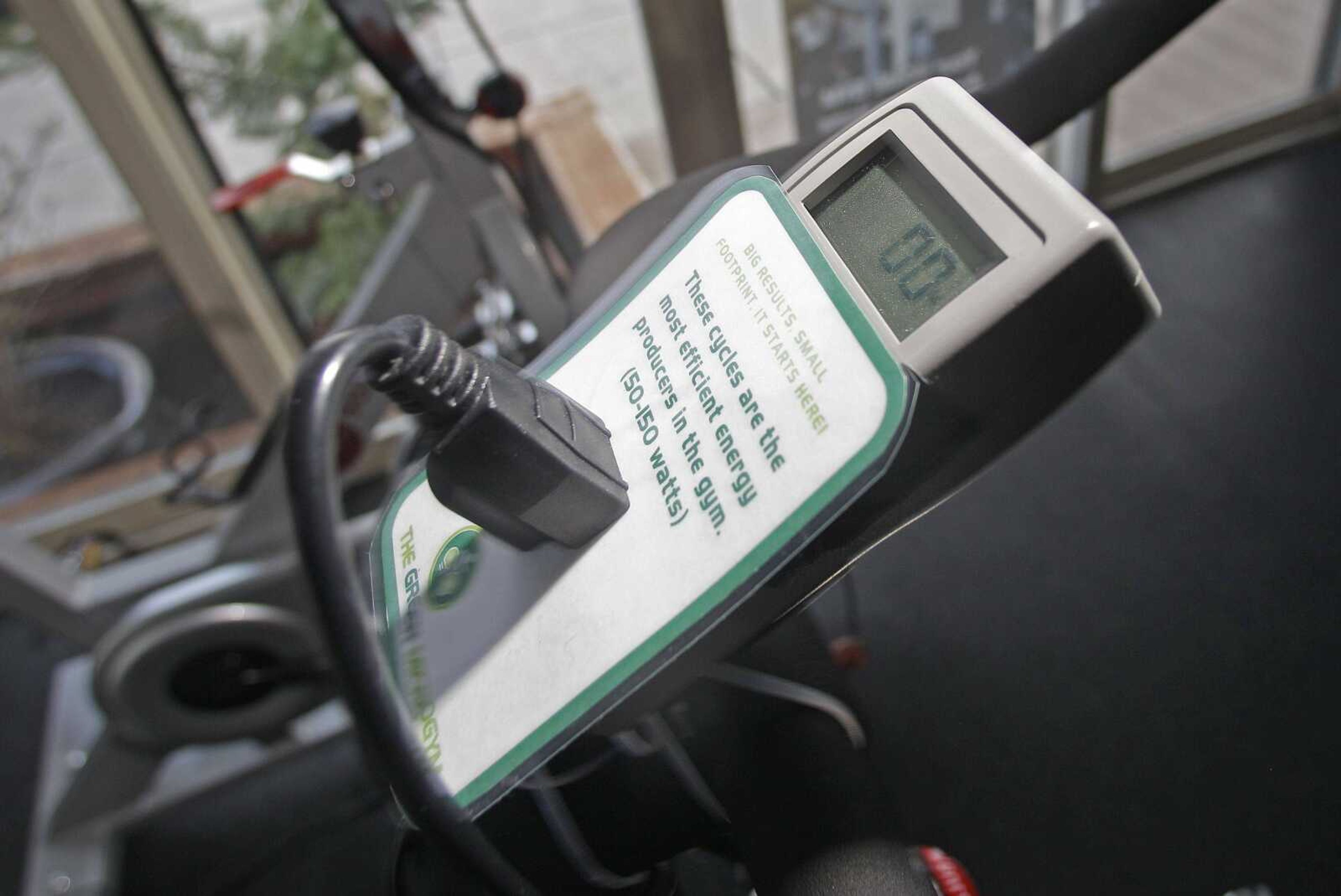At Oregon gym, you burn calories, move electrons
PORTLAND, Ore. -- Reddening, a rivulet of sweat running across her cheek, Amy McCullough hunched over the stationary bike, pumped her legs like crazy and began producing serious power -- enough watts to run a flat-panel TV and a ceiling fan...
PORTLAND, Ore. -- Reddening, a rivulet of sweat running across her cheek, Amy McCullough hunched over the stationary bike, pumped her legs like crazy and began producing serious power -- enough watts to run a flat-panel TV and a ceiling fan.
She thrust her arms upward and exclaimed: "Oh, 180!"
And, with that, her electrical output drooped. The generator attached to her exercise machine slowed, and the digital readout from the device on the handlebars fell below 100 watts.
The transient burst was a personal best for the 43-year-old legal aid lawyer who works out five days a week at a storefront fitness center in north Portland where members on exercise machines fitted with compact generators can burn calories and generate electricity at the same time.
Their workouts satisfy a modicum of the electrical draw at the 3-year-old Green Microgym. More important, they satisfy a demand among its 200 members to be fit in a way that fits Portland's green-indie-local ethos.

The 3,000-square-foot gym aims for a neighborhood trade. It features solar panels, recycled toilet paper, renewable-source flooring and lots of reminders on the wall about turning off lights, fans and TVs.
"I was really attracted to the idea that it would be green," said McCullough, who joined shortly after the gym opened in 2008. "I could go in and generate electricity. How cool is that?"
It has occurred to many exercisers during long stretches on machines that it would be cool to turn sweat into watts. In recent years, a few tinkerers and entrepreneurs have brought the idea to market.
So far they have but a teensy sliver. The two leading startups sell equipment to retrofit existing bikes and elliptical trainers, and each reports hooking up about 1,000 machines. An executive of one company estimates that American fitness centers house 8 million to 10 million machines that could generate power.
When Adam Boesel opened the Green Microgym in Portland's artsy, gentrifying Alberta district, he figured on a market among people already educated about the environment.

He's gotten a lot of publicity about the technology but the machines, he said, are "just the shiny wrapper on a package, which is energy efficiency."
That's something gym members such as Martha Jones take seriously.
"Whoops, I have to turn off the lights," she said at the end of an interview in the gym's basement studio, dashing back inside.
Prominent in the gym are signs that explain how to use the individual, adjustable controls for lights and fans. A wall-mounted button connects to a remote device that allows the cable boxes to be shut down, not just put on standby and using 29 watts when the flat-panel TVs are not in use.
Jones is an Intel engineer who likes seeing her workout quantified in watts. But it's not primarily the electricity that attracts her to the Green Microgym.
"It's just really supportive," she said. "If you have somebody who knows you, who knows your name, they will keep you moving. I know for sure I will cheat right and left on my workout without that."
She counts hoofing it to the gym as warm-up and cool-down.
"And I do more shopping in Alberta because I'm walking here," she said. "It helps the local businesses."
Boesel said he doesn't try to calculate how many kilowatt-hours the Green Microgym produces. "The payback period is irrelevant to me," he said.
But the machines themselves and the potential they represent are "pretty cool," he said. "It's not inevitable that all the machines will make electricity someday. ... It's all going to have to be pushed along. That's what I think I'm doing."
Connect with the Southeast Missourian Newsroom:
For corrections to this story or other insights for the editor, click here. To submit a letter to the editor, click here. To learn about the Southeast Missourian’s AI Policy, click here.










